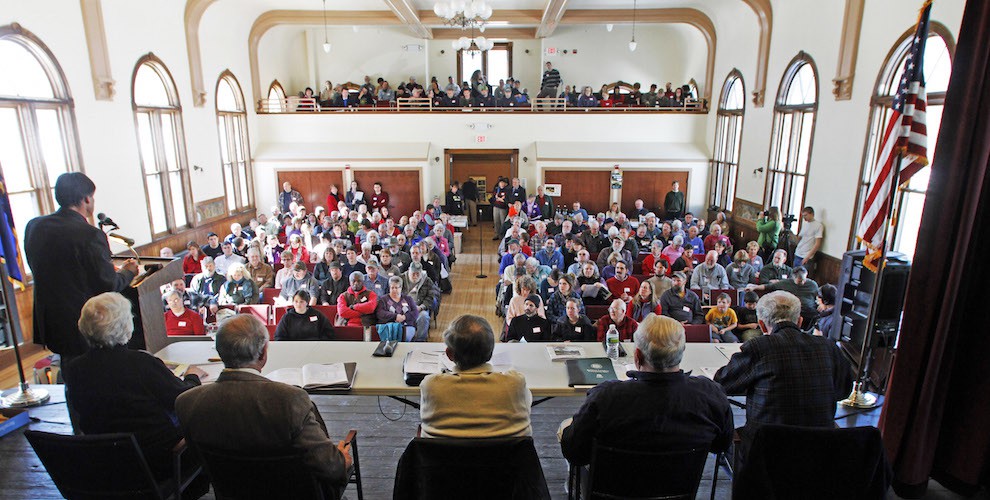When I was much younger, I had the good fortune to be awarded a full scholarship to attend the Woodrow Wilson School of Public Policy at Princeton University. For a poor kid from the Midwest it was an unbelievable opportunity.
I had dreams of elected office, and I was going to use my time at Princeton to learn everything I could to solve our country’s problems: homelessness, drug abuse, unemployment and other issues facing state and local government.
I received the scholarship thanks to a $35 million gift made in 1961 by Charles and Marie Robertson, who inherited the A&P supermarket chain. But it was students like me who caused a problem for Princeton.
The children of the Robertsons argued that their gift should have been used to prepare graduates of the Wilson school for service in the federal government, particularly in foreign relations. (Keep in mind, in 1961 many Americans thought war with the Soviet Union was inevitable.) Princeton, they claimed, had improperly altered the terms of the gift – by giving financial assistance to someone like me, and hundreds of other, who had no interest in the foreign service – and a lawsuit was filed to return the money. Princeton recently settled the lawsuit for millions of dollars. (You can read more about the Robertson lawsuit here.)
Aha! I know what you are thinking. All fund agreements at a community foundation must include the language on the variance authority, and, with that, lawsuits on donor intent could be avoided. Here is typical language:
The Board of Directors of the Community Foundation may modify any restriction or condition on the distribution of assets for any specified charitable purpose or to specified organizations, if, in their sole judgment, such restriction becomes, in effect, unnecessary, incapable of fulfillment, or inconsistent with the charitable needs of the area served by the Foundation.
These words give your community foundation extraordinary power in making changes on the use of charitable dollars. It’s like Magneto, one of the X-Men. Magneto has the power to alter the subatomic makeup of any metal, to turn it into a force for good. Your board of directors, thanks to the variance authority language, can be thought of as the Magneto of fund agreements --- they have the power to change the agreement and turn it into a force for good in your community.
Well, maybe not.
There have been at least two lawsuits over the years challenging the authority of a community foundation to invoke the variance authority.
The New York Community Trust found itself as the target of a lawsuit whose origins dated back many years. In 1971, the New York Community Trust’s board chose to reallocate the annual distribution from six trust funds, including one created by John D. Rockefeller, Jr. They cited tax law changes and existing anti-poverty programs as the reason for diverting funding away from several charities, including one known as the Community Service Society.
Many years later, the Community Service Society sued, asserting that the New York Community Trust abused its power and unfairly diverted the annual payouts. While the judge ruled that community foundations had the right to divert funds using the variance authority, the ruling narrowed the circumstances when that power could be used. In addition, the state attorney general at the time took the position that, when the variance authority is used, community foundations should report that use to them.
Another high profile case involved community foundations in the San Francisco area. Beryl Buck, a childless widow, died in 1975 when she was 75 years old. She left $10 million in stock in the Belridge Oil Company, stipulating in her will that the income was to be used exclusively for ''nonprofit charitable, religious or educational purposes in providing care for the needy in Marin County, Calif., and for other nonprofit, charitable, religious or education purposes in that county.'' The San Francisco Foundation was asked to administer the Buck fund.
Just four years later, the stock in Belridge became much more valuable when it was purchased by Shell Oil Company. The Buck fund was now worth more than $250 million, and the corresponding annual payout rose substantially, as well. Marin County was a substantially wealthier community than San Franciso and the San Francisco Foundation, citing this fact, started to use some of the income from the Buck fund for anti-poverty programs in San Francisco.
Residents in Marin County sued, and they were joined by the state’s attorney general. Eventually the judge ruled that the San Francisco Foundation could not base it’s use of the variance authority on the relative wealth of the two communities. Rather, they had to prove that it would be illegal, impracticable or impossible to spend all of the annual distributions in Marin County. Using that standard, the residents in Marin County prevailed.
So … you have the variance authority which, on its face, seems quite broad. Yet courts, and state attorneys general, have limited this power at community foundations. Where does that leave you?
In our next blog post, we’ll talk about steps you can take to make sure you are properly using the variance authority. You may not have the powers of an X-man, but the powers you do have would make Magneto proud.
